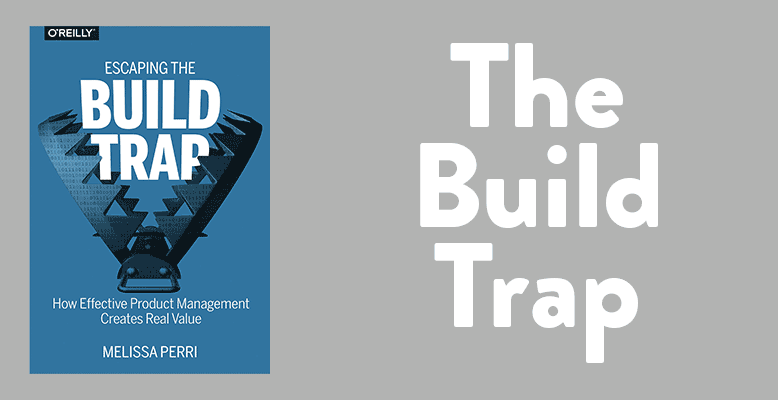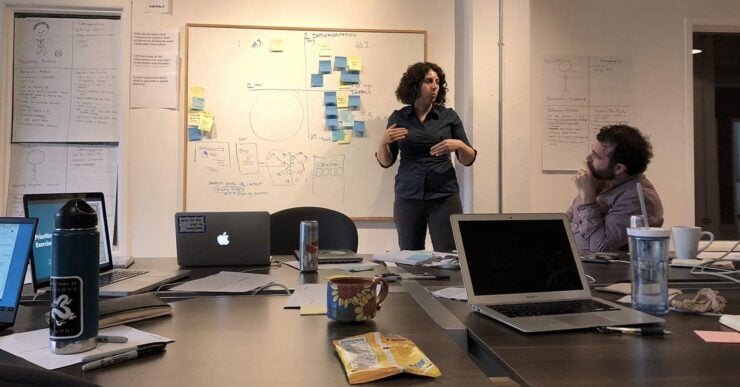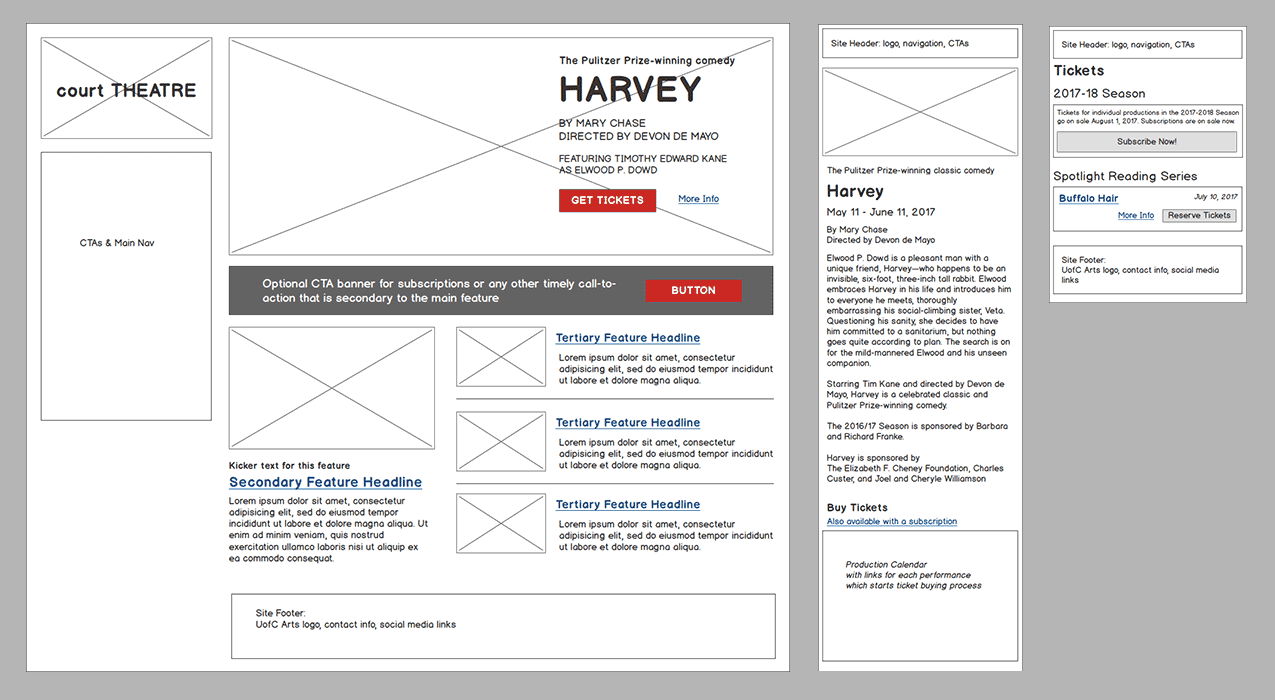Product Management and the Build Trap

In this post, we explore how good product management practices can help you escape the build trap and create long-term value for your organization and customers.
We recently received a prospect request for separate estimates on 175 different features of a potential digital product. When asked about why the project required certain features, the prospect responded, “We just need you to build the thing.”
Needless to say, we politely passed on the opportunity. However, this situation is all too common at digital agencies. Demanding detailed estimates up front sets any project up for potential failure. Here’s why:
- Misinterpretation: Creating estimates in a vacuum—without input from the right stakeholders—ensures you’ll misinterpret something, which means your estimates will be off.
- Lack of Context: Without clearly understanding business goals and user needs first, you’re forced to make assumptions about what may or may not work. These assumptions are likely wrong.
- The Build Trap: Creating an exhaustive list of desired features up front guarantees that some will miss the mark. Critically, if you end up building all those features, you might as well light money on fire.
This approach to designing digital products and services is outdated and wrong. It puts organizations at risk and sets everyone up for potential failure. Plus, it plagues the RFP process and wreaks havoc on otherwise well-intended client-agency relationships. Most importantly, it wastes time and money—a lot of money.

What is the Build Trap?
The build trap is when organizations become stuck measuring their success by outputs rather than outcomes. It’s when they focus more on shipping and developing features rather than on the actual value those things produce…Companies can get out of the build trap by setting themselves up to develop intentional and robust product management practices…to maximize business and customer value.
— Melissa Perri, Escaping the Build Trap: How Effective Product Management Creates Real Value
Because of situations like the one described above, it is not uncommon for organizations to spend a lot of money building features that miss the mark, fall short of expectations, or just don’t get used. When the budget runs out, the project doesn’t meet its goals. If it was a “mission-critical” project, people can lose their jobs, the organization loses money, or worse, goes out of business. While the latter is an extreme example, it illustrates the potential damage that falling into the build trap might bring.
Thankfully, there are better ways to reduce risk and increase chances for success. In her book from O’Reilly Media, author Melissa Perri covers how organizations can create real, long-term value for themselves and their customers through better product management practices.
What is Good Product Management?
Good product management typically lives at the crossroads between business goals, user or customer experience, and technology. While execution differs from organization to organization, it includes key common elements:
- Product strategy: The long term vision of what product success looks like and how to achieve it.
- Product development: Designing and building products based on business goals and customer needs.
- Market launch: A product’s release (and the marketing campaigns that accompany it).
- Continuous improvement: Long-term support to ensure that product performance improves over time.
With its focus on improving outcomes for key customers over time, the business case for good product management practices is obvious. However, any organization can (and should) build these practices into their organizational strategy.
- Nonprofits can significantly improve how they deliver programs and create impact through digital products as mandated by their theory of change. Our Adopt-a-Beach work with the Alliance for the Great Lakes is a great example of this.
- Government agencies can use digital products to deliver meaningful public services faster and more efficiently over time, saving taxpayer dollars. We did this for the Chicago Office of Tourism and Culture’s Chicago Greeter service, helping them actively improve it over several years.
To become digitally-enabled and product-focused, organizations usually need to make a few important shifts.
Project vs. Product Mindset
Projects are an essential part of product development, but thinking only in projects will cause damage. A product is something that needs to be nurtured and grown to maturity. This takes a long time.
— Perri, p. 14
Your website is a product. Unfortunately, many organizations still view their website as a project rather than a critical business tool that drives value over time. Products are ongoing concerns, resourced to improve customer experiences and drive organizational growth. Projects are a line item in an annual budget. When they’re done, they’re done. And that’s a problem.
A project-based mindset can lead entire organizations and the systems within them to undermine their chances for long-term product success:
- Finance: Annual budgets undercut an organization’s ability to deliver value incrementally over time.
- Operations: A project mindset often prioritizes feature checklists vs. achieving desired outcomes.
- Human Resources: A command-and-control culture vs. one that nurtures continuous learning and improvement leads people to cover their asses rather than embrace experimentation and organizational agility.
- Legal: Contracts often require detailed specifications about project deliverables. These tie organizations to requirements that could undermine their potential for success as they learn new things.
Unfortunately, these practices incentivize companies and the teams within them to focus on outputs rather than answering the question, “how do we create continuous value for customers?”
Outcomes Over Outputs
Outputs are easily quantified things that we produce—number of products or features, number of releases, or velocity of development teams. Outcomes are the things that result when we finally deliver those features and the customer problems are solved. True value is realized in these outcomes, both for the business and for the user or customer.
— Perri, p. 12
Melissa Perri’s book includes dozens of great tips for building successful product-focused organizations. Most importantly, these organizations prioritize outcomes over outputs. This is a fundamentally different way for many organizations to think about how they operate. In other words, to create an outcomes-focused culture, product teams must tie individual projects to a larger organizational product strategy that’s driven by customer needs.
In a client-agency setting, this can be doubly challenging since agencies aren’t often exposed to larger organizational strategies. However, it is worthwhile for all parties to learn how an individual product strategy ties into the organization’s ‘big picture’. And that starts with a good product roadmap.

Product Roadmapping & Discovery
Your product roadmap is the prototype for your strategy.
— Product Roadmaps Relaunched, O’Reilly Media
Product roadmaps get a bad rap. Like user personas, product roadmaps are often criticized for many reasons, not the least of which is that people read them once and forget about them. However, when created in a collaborative setting—like a discovery workshop—with the right stakeholders involved, a good product roadmap becomes a shared vision for success, something that can evolve over time as your needs do.
Plus, product roadmapping can jumpstart your organization’s product management transition. The workshop can be used to help participants understand how good product management practices foster a culture focused on successful outcomes over outputs.
Good product roadmaps:
- Tie product goals to organizational goals
- Tie business goals to user needs
- Identify what success looks like and what it might take to achieve your goals
- Evolve over time as you learn new things and priorities change
When delivering product roadmaps, we keep them lean and in a format that can be easily updated. Also, the first thing we say to a client is “this will change”. And they do, and that’s okay. In other words, it’s important not to over-engineer them. Rather, we use product roadmaps as documentation for shared consensus that occurs during a workshop. Most importantly, they become a single source of truth for the product vision that improves as you learn new things.
Flexible, Transparent Budgeting
Tying budgeting, strategy, and product development to [an] artificial yearly time cycle only creates lack of focus and follow-through. Instead, companies should continuously evaluate where they are and where they need to take action, and then fund those decisions.
— Perri, p. 73
We mentioned the problem of annual budgeting cycles above. We should also stress how important it is to balance financial realities with your goals and aspirations. In an agency-client relationship this can be challenging because financial resources for product development and management are typically finite. When the money’s gone, it’s gone.
That’s why it is critical that all parties regularly communicate about budgets and pivot quickly when something’s not working. At Mightybytes, we collaborate with our clients to identify budget ranges that are comfortable for all parties, then balance those with regular prioritization of tested features and deliverables.
While we can provide some general budgeting guidelines up front, it is typically not until after a product roadmapping engagement that we really start to understand a product’s vision, scope, timeline, and budget range. Moreover, it’s possible that costs will shift as we learn new things. If the budget is immovable, we work with clients to reprioritize deliverables and timelines to accommodate the new information.
Similarly, we discuss project budget reports during bi-weekly check-ins. This is critical to maintain transparency, accountability, and to tie economic outcomes to product activities. When everyone is in the loop, it is easier to make decisions together about the best path forward.

Shifting Priorities, Continuous Testing
Sometimes your best ideas don’t land with target users, and that’s okay. Help your team understand that as priorities shift, features may get thrown out. The earlier you validate or refute an idea, the faster you’ll escape the build trap.
To facilitate test-driven product management, involve customers in the process: do user research, run user tests, and conduct interviews. First, this will help you better understand how customers might react to feature ideas, navigation options, page layouts, and other product components. Also, you don’t need to test every element. However, if there is uncertainty among project stakeholders about whether something will work, test it with wireframes and prototypes versus using valuable resources to build it.
Ethical Product Management
Certainly, as a Certified B Corp, we would be remiss if we didn’t also mention that incorporating good product management practices can foster a more sustainable and inclusive product approach that respects customer privacy and data ownership. For Mightybytes, that’s all part of our Code of Ethics.
Accessibility
Accessibility should be a priority for every digital product. Good product management practices empower teams to prioritize accessibility over a product’s entire life cycle, not just when it is built and launched. Train your team on digital accessibility practices, regularly audit your product to ensure standards adherence, and adequately resource projects with proper budgets and realistic timelines.
Sustainability
Also, while product management’s focus won’t necessarily reduce waste, that is often a by-product. Speedy products that work across browsers and devices (and in low-bandwidth areas) use less resources. Similarly, reevaluating business goals and customer needs reduces the resources necessary to create a successful product. Couple this with green hosting powered by renewable energy and sustainable web design practices and you will produce high-performing, low carbon digital products.
Privacy & Security
Sometimes, the most useful thing you can do for a customer isn’t the most obvious. By following good data privacy and security practices, you safeguard customer information and respect users’ rights to own their data or have it removed from your records. For a handy resource guide on this topic, check out our Data Privacy Checklist.
Becoming a Product-Led Organization
The majority of buying decisions get made before anyone talks to a customer these days. All the research is getting done — hopefully — on your company’s website. Any link in an advertisement or link in an email is going to route that customer back to the website. That’s your most important digital product.
— Zack Rosen, Co-Founder, Pantheon
Finally, as we have explored, successful product management requires a hybrid blend of marketing strategy, technical know-how, human-centered design, and communication skills. These must work in tandem with financial guardrails and various project timelines. For large organizations, each discipline may have its own dedicated person or team. For startups, small nonprofits, or even larger organizations that have yet to undergo a digital transformation, this might not be an option.
Adding a product manager to your website team might be a good start. More likely, finding a product-focused agency partner to help you transition could be the best option. Regardless, if managing websites, mobile apps, and other digital products is in your job description, I can’t recommend Melissa Perri’s book enough. My copy is dog-eared with many page corners turned. I refer to it often. You should grab a copy too.
If you have product management-related questions, feel free to reach out via our contact form. We would love to chat.



